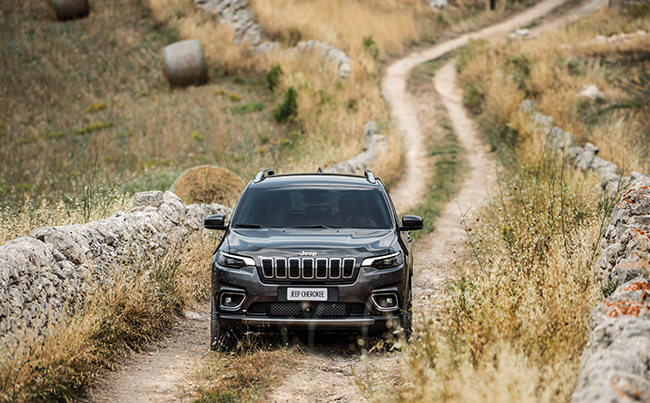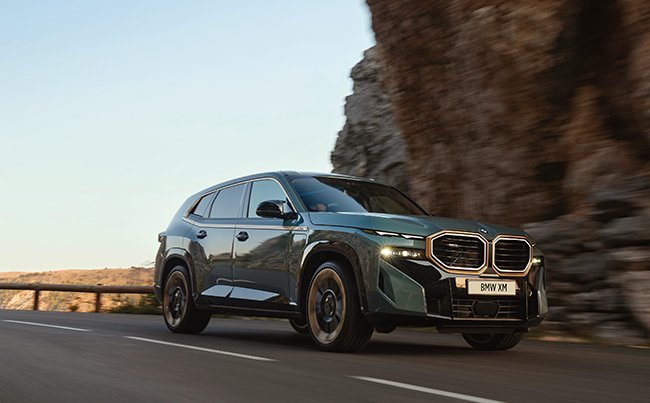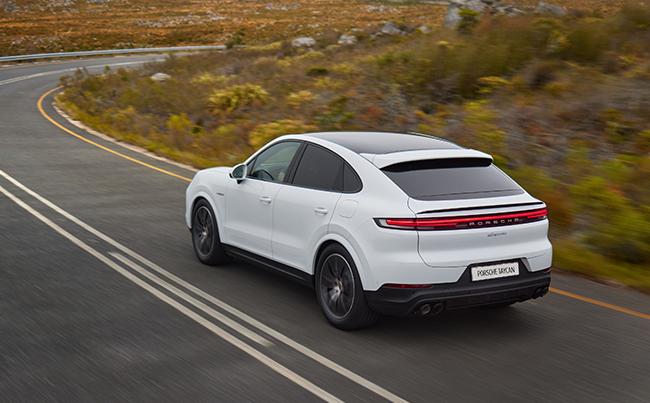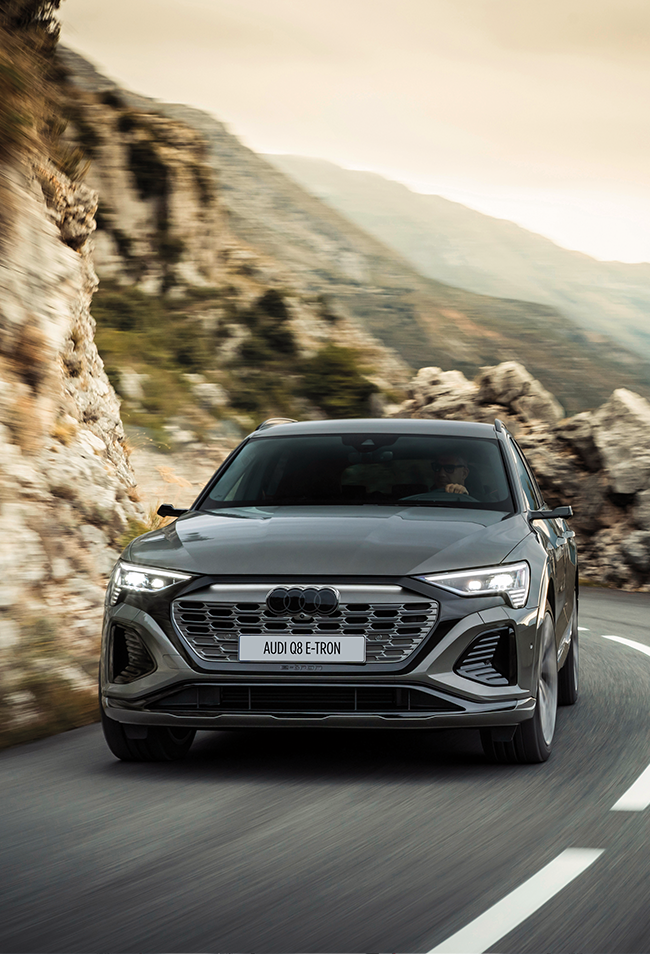Who would have thought it? Back in 2010 when Nissan revealed the all-electric Leaf to the world, those who bothered to do so envisaged an electric future awash in small cars, a few steps up from golf buggies. The reality is turning out to be quite different. Electric, ironically, has given manufacturers licence to create the sizeable cars so many want, without accusations of fossil fuel imprudence to hinder them, superficially anyhow. Not only that, electric is proving to be as much about performance as economy and green canniness. Only two impediments remain for electric SUVs – range and off-road reliability. But even those are currently being addressed. A good time then to be buying and selling large cars.
It’s a coin toss as to which SUV is the year’s most anticipated. In the dirty corner, the tag-team of the Land Rover Defender 130 and Jeep Grand Cherokee are what many serious off-roaders have been waiting for. Stage left in the glam corner, vying for performance colours are Audi’s Q8 e-tron and BMW’s tasty XM.
Defender first. The 130 moniker references a third row of seats, making the eight-seater SUV a future darling of the safari industry. It’s available in 3-litre straight six diesel and petrol guise, as well as V8 petrol, for the truly deep of pocket. And in a move that underlines Land Rover’s obsession with variants and sub-niches, a five-seater overlander version of 130 has been unveiled. The Outbound boasts an astonishing 2 516 litres of load space with the second row of seats folded down and is ripe for after-market accessorising. It’s a curious mix of exclusive and pragmatic – rubber mats but bespoke livery; silky smooth petrol straight six but top-flight Terrain Response 2 system underpinnings. It all adds up to hyper exclusivity, Land Rover’s answer to the Mercedes-Benz G-Class.

Cherokee next, introduced as a seven-seater in late in 2022 and recently gifted a five-seater brother. Both underline Jeep’s most recent two-pronged strategy – make Cherokee all about luxury, leaving the off-road heavy lifting to its Gladiator and Wrangler siblings. So it is that the latest Cherokee is more than ever a tar and smooth-dirt road car, even though it comes equipped with the manufacturer’s Quadra-Trac II off-road system, lockable low-range and selectable off-road modes, as well as 277 mm of ground clearance. The giveaway is the tyres, which point to an emphasis on economy and quietness rather than bushwhacking prowess. Accept the limitations and Cherokee is as good a luxury SUV as is available today, especially from a space point of view – it’s huge. Features too, which include a front passenger-side digital screen angled away from the driver for the entertainment of a partner.
Unashamedly a tar star is Audi’s battlestar Q8 e-tron, formerly known as just e-tron. The name change reflects Audi’s readiness to hit the market with more electric products, namely Q4 and Q6 e-trons. Star of the new Q8, due at the end of the year, will be the SQ8 e-tron with 373 kWs of neck-snapping ability. New updates to the old e-tron include bigger batteries, faster charging, revised, sharper looks front and back, a cleaner, better-quality interior and the promise of a 500km range.
Finally, BMW’s XM weighs in as the last of 2023’s most anticipated. Truly it will be a beast, the standard iX one of the unrivalled electric SUV stars of recent years.

It gets a bit complicated though – so, full attention. First off, there’s the standard iX double act xDrive40 and xDrive50, both fully electric with different power outputs. XM is a hybrid, featuring Munich’s twin-turbo 4.4 litre V8 from the M5, as well as a 145 kW electric motor that is built into the 8-speed automatic transmission. Combined, there’s 480 kW and 800 Nm of torque on tap if you press all the right buttons and hang on. But wait – there’s more. BMW has just announced an even more powerful, fully electric iX, the M60. With 455 kW and an astonishing 1 100 Nm of torque it can rocket to 100 km/h in 3.8 seconds, which betters the hybrid XM (4.3 seconds).
Both XM and iX M60 offer insight into BMW’s way forward and their vision has to be applauded. X is brave in terms of design as well as technology; with the possible exception of Porsche’s Taycan, it is the best realised of current electric cars – simple to drive, thrilling in execution, reliable and efficient.

Over in Stuttgart fellow German Mercedes-Benz, ever ascendent, has announced the further roll-out of its electric SUVs, the highly anticipated EQE SUV and EQS SUV, the former the electric version of the GLE and the latter the whisper-sister of the leviathan GLS. Mercedes has made no bones about wanting to ‘own’ luxury electric and it has targeted its growing SUV range for the most attention. Entry level EQA and EQB models are available in all markets already, with EQE and EQS SUVs next. Dynamically all reveal a bias towards tar driving, though off-road ability is impressive, especially in cars equipped with 4Matic drive systems. Mercedes’ aim in the short term is to provide potential buyers with fossil fuel as well as electric options for all their cars before a final switch at decade’s end to electric only. Whether or not that strategy applies to the developing world, only time will tell – indications are that markets such as SA may get to build and run older fuel cars for a longer period.
Germany’s other luxury brand, Porsche, has been slower to the electric circus. Like Toyota, it has chosen a circumlocutionary hybrid routing, with only the Taycan representing the marque’s full electric future. Next in line will be Cayman and Boxster sports cars, then Macan and Cayenne SUVs, likely by 2026. In the meantime, the new Cayenne, recently updated, counts among its number the E-Hybrid, a petrol/electric coupling that produces 346 kW and offers a 90 km pure electric range. Bigger news, however, is Cayenne’s new interior architecture, which now includes the option of three digital screens, one of which is angled exclusively for passengers. There are engine upgrades too – the formidable bi-turbocharged 4.0-litre V8 engine in the range-topping Cayenne Turbo GT increases its output to 485 kW, while the Cayenne S has swapped its V6 for the company’s twin-turbocharged V8, good for 349 kW. The base model retains the turbocharged 3.0-litre V6, but there are power hikes there too.

The other silent assassin that’s been causing quite a stir is Peter Schreyer’s gorgeous, award-winning EV9. SA won’t see large numbers of the car, but it will be noticed when it swings by; the marque’s EV range, which includes the equally arresting EV6, trades heavily on design. The EV6 has won pretty much every design award around, from the 2022 European Car of the Year and the 2023 North American Utility Vehicle of the Year to the What Car? 2022 Car of the Year award, and EV9 looks set to equal, if not better, its sibling.
Lexus, pioneer of hybrid drive systems in SA, has been enjoying the success of its RX, darling of the Lexus fleet, admired for its combination of size, elegance and design daring. It’s very much the alternative choice among luxury SUVs. The fifth-generation RX joins the updated UX compact crossover, the NX and leviathan LX in the firm’s SUV stable. It’s the most popular, largely because of its polish; road noise and interior insulation are all dampened down, making the large SUV one of the quietest on the market, at any price point. New for 2023 are improved efficiencies. RX reduces the size of its petrol engines over the previous models and upgrades their hybrid systems. A turbocharged 2.4-litre petrol engine now does the hard work, replacing the previous 3.5-litre V6 unit. There’s no reduction in performance though – the top-of-the-range RX 500h F Sport Limited hustles to 100 km/h in under six seconds.

Of the other models, the compact UX gets a makeover, with a revised front end, tweaked headlights and rear combination lamps. There are upgrades to suspension and tyre technologies as well. Inside, the infotainment screen is bigger and there are improvements to access – Lexus has introduced its easy entry system on the UX, meaning the car can be opened with a smartphone. The bigger NX has also had an update, notably the new infotainment system, housed in a large, glare-free touchscreen. It works along intuitive, icon-based smartphone lines and the car’s cloud-based navigation system includes Google Point-0f-Interest so users can share their journey with others. As is becoming common, system updates can be carried out over-the-air. The NX range includes five model derivatives, two with petrol engines and three with petrol-hybrid systems. The range topper is the 350 F Sport, offering a 0–100 km/h sprint time of seven seconds.
One in seven cars sold globally is now electric, according to the International Energy Agency, with substantial growth in all markets. Ten million electric vehicles are in circulation, with China leading the way; one in four cars there is electric. In SA, coming off a low base, sales for 2022 numbered about 500, substantially more than 2021. SUVs have much to do with that improvement. Electric and hybrid SUVs and crossovers make enormous sense – all the ability and practicality with less punishment for both pockets and the environment. A win-win – the future looks bright.








